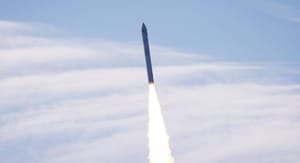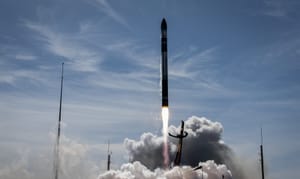
Feb 2, 2024
Rocket Lab recovers booster after successful launch
Rocket Lab recently performed their forty-third orbital launch attempt with the company's Electron rocket early on the 31st of January. The launch took place from Launch Complex 1 on the Mahia peninsula, in New Zealand, carrying four satellites.
The mission was called 'Four Of A Kind' and carried four Space Situational Awareness satellites for NorthStar Earth and Space to a 530-kilometer low Earth orbit. NorthStar's satellites will monitor in-space objects from low Earth orbit up to geostationary orbit.

Both Peter Beck, Rocket Labs founder and Chief Executive Officer, and Stewart Bain, NorthStar Earth and Space founder and Chief Executive Officer, commented on the launch with Peter Beck saying:
“The success of today’s mission to deliver Spire & NorthStar to orbit, and the completion of our secondary mission to return Electron to Earth after launch, has been a fantastic start of what is set to be Rocket Lab’s busiest year ever. We have more missions booked in 2024 than we’ve ever scheduled before, and it is a real privilege to continue to deliver small launch reliability for our satellite customers on advanced missions like these and for all the missions to come in 2024.”
And with Stewart Bain saying:
“I am intensely proud of our NorthStar team on this landmark occasion,” – “This mission is the first of its kind and is the physical manifestation of a decade long dream to deliver hope to future generations of space enthusiasts and to all of us who every day depend on a sustainable and clean space environment for the wellbeing of our planet. Special thanks are owed to the NorthStar team, our stakeholders, and partners at Rocket Lab, Spire, and ExoLaunch for achieving this smooth ride into orbit. Shortening the launch window to avoid other space objects heightens the importance of our mission. Now, the work begins at NorthStar to deliver the services to our eagerly awaiting clients. Our industry can start now to change the way we manage our essential space environment.”
This mission also had the first stage of the rocket splashing down under a parachute as Rocket Lab is also attempting to make Electron partially reusable in the future. Electron recovery will be under a parachute due to being unable to take the payload penalty of saving propellant for landing, like SpaceX's Falcon 9. Originally Rocket Lab was hoping to have the stages be caught by a helicopter but decided not to proceed with the helicopter strategy due to the risks and cost.
What is Electron?
Electron is a two-stage launch vehicle developed by Rocket Lab. Electron utilizes the first electric-pump-fed engines to power its small rocket on both stages and is made of carbon fiber for its tanks.

The first-stage is powered by nine Rutherford engines generating 23 tons of thrust burning rocket-grade kerosene and liquid oxygen. The second-stage is powered by a single vacuum version of the Rutherford engine generating 2.6 tons of thrust also burning rocket-grade kerosene and liquid oxygen.
Rocket Lab claims Electron can launch 300 kilograms into low Earth orbit or 200 kilograms into Sun-Syncronous orbit.



